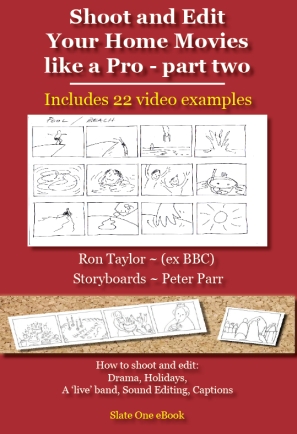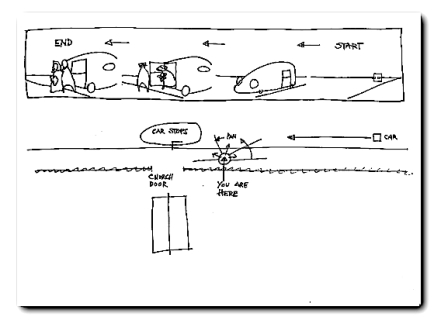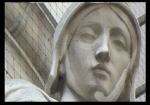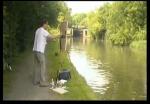

Introduction
‘Shoot Your Home Movies Like a Pro’ is for all those who have camcorders, camera phones, still cameras with video, iPads and tablets but do not know how to film a sequence which can then be edited into a short film.
Filmmaking is now cheap. Digital cameras have brought filmmaking within the reach of millions all over the world. So, how do you film like the professionals? Filmmaking can be taught to anyone. It is easy to learn how to produce a five to ten minute film which will not make your audience fall asleep.
The essential stages for all film makers (professional and amateur) are: planning, filming, editing, sound and presentation. The techniques required for you to film successfully can be learned quickly and the more you film the better you will become. Whether you are filming a child’s birthday party, a family wedding or rock gig the preparation is exactly the same. Plan it, maybe sketch out a rough storyboard, get your equipment together and perhaps rope in a few friends or more experienced film filmmakers to help you out.
Shoot and Edit Your Home Movie like a Pro – iBookstore
Grab a sample here – (eBook with video examples + storyboards)
What Makes a Good Shot?
What makes a good shot? Composition. So, how do you compose a good shot? Here are two definitions:
1 – “the nature of something’s ingredients or constituents; the way in which a whole or mixture is made up”.
2 – “the action of putting things together, a thing composed of various elements”.____ Oxford English Dictionary.
“In the visual arts – painting, graphic design, photography and film … composition ….. can …be thought of as the organization of the elements of art according to the principles of art”. ____ Wikipedia.
In the examples below the ‘elements’ are people, buildings or objects in the frame.
Often amateurs shoot their subjects too wide. As they look through the viewfinder they only see their Auntie Doris or the baby in the pram. They don’t take the time to look to and see how much space is around what they are filming; whether there is a branch of a tree sticking out of the baby’s head or a donkey has strayed into shot. You need to pause for a moment and allow your eyes to take a look at the edges of the frame. Is there anything in shot that makes it look ugly? Can you move the camera slightly to the left or right and get rid of the intrusive background? You may only need to take a few steps to the left or right of your subject or simply move in closer or further away. Always be carefully when you look through the viewfinder to compose your shot. Is there anything that makes the shot bad, comical or boring?
Rule of Thirds
“The rule states that an image should be imagined as divided into nine equal parts by two equally-spaced horizontal lines and two equally-spaced vertical lines, and that important compositional elements should be placed along these lines or their intersections. Proponents of the technique claim that aligning a subject with these points creates more tension, energy and interest in the composition than simply centering the subject would”. ____ Wikipedia.
Rule of thirds graphic:
Here are three quick ways to improve your shots:
1 – move your subject
2 – re-size the shot; move closer or further away to get a better shot
3 – move yourself to the left or right to create a better background.
Standing in the right place
Where you decide to set up your camera will determine whether you are likely to get a good shot. Put simply, where you stand with your camera is crucial in getting a good shot. The graphic below shows where you should stand to film an approaching wedding car carrying the ‘bride to be’ to the church. By standing just to the right of the church door it enables you to film the car as it approaches then you ‘pan’ to the left as the car draws to a halt.

__________________________________________
How to Shoot a Wedding – extract
I will use the word ‘church’ throughout the chapter though I suspect some of the lucky couples will decide to tie the knot at a registrar office, hotel or another location of their choosing. Essential shots/sequences needed to tell your story of their great day:
Exterior church
Many churches have stunning exteriors. Try and get there ahead of the main wedding party and shoot the church. Maybe it is by a river or nestling in the Malvern Hills. Be sure you shoot close ups of any interesting details. Often there are Gargoyles peering down at you from above, stained glass windows, superbly crafted door- ways and arches. I would not spend too much time on this, unless your wedding is in St. Paul’s Cathedral, Notre Dame or Saint Pat- rick’s Manhattan, in which case you could produce a fifty minute documentary on the church.
Five to ten shots should be enough to set up your location.If the heavens open up on the day of the wedding you could shoot a few interiors of the church.
Remember, if you want to film inside a church, to ask the Vicar/ Priest for permission before you film.
Permission to film might also be necessary later if you want to film any of the wedding vows.
Interior church
Grab a few shots of the empty church. Then a few shots of the guests as they try and find their seats. Maybe shoot a few details like close ups of the stained glass windows. They could be quite useful in your edit when you are looking for ‘cut aways’ to shorten the length ‘running time’ the service. Other objects to film could be: flags, architectural features, ornate pews, the pulpit, close up Bibles, Hymn books.
Guests arriving
Film guests as they arrive. Close ups and wide shots. Try and shoot singles, couples and groups as they arrive. You can then edit a short montage of the ‘arrivals’ when you get into your cut- ting room (editing room). You may not be able to film every one arriving. If the wedding is to be attended by two hundred guests you will finish up with many shots which you will never use. If you have the time or a relative shooting on a second camera you could film every one at a large wedding if you then plan to give the Bride and Groom a copy of all who attended.
See the guests walk toward the church and enter. If there are any toddlers in the party don’t stand over them as you film. The top of their heads is not their best feature. Crouch down, or if your knees can’t stand the strain, get some one younger to film the kid- dies at their own height. Your shots will be more interesting and the children will respond to you far better than if you appear to be a giant.
If you are confident or experienced you could try a few camera moves. An experienced film maker would ‘pan’ with the guests as they walk to the church door. If you are trying this technique for the first time the professional approach to this kind of shot it to make sure you have the lens on ‘wide angle’. Never try and film a pan or any kind of moving shot when you have the lens at the ‘tight end’ of the zoom. It will make your audience dizzy. Your movie will also look like it was filmed by a amateur. It is a good idea to use a tripod for any ‘pans’ you may want to shoot. Though that is not strictly true especially now that most camcorders are very light to hold.
The reason many professionals use a tripod is that the weight of broadcast/film cameras makes it difficult to hold steady whilst trying to pan with a moving object.
Should any rain start as the guests arrive you could always stand inside the church door and film them as they enter.
You may decide to skip certain sections of the wedding, either because of time, not enough tape/Hard Drive space or shortage of battery power. If problems do occur beyond your control there are three sequences you must film:
a – the arrival of the Groom and Best Man. b – the arrival of the Bride and her father. c – the exit from the church of the Bride and Groom
Groom and Best Man arrive
The nervous Groom with his Best Man arrive at the church. You could try a different style of filming from how you filmed the guests arriving. Try a hand held shot and follow them toward the church. Or simply let them walk past you and then pan to see them walk up to the church door. Remember that any hand held filming you do should be with the lens set on the ‘wide angle’ setting.
Wedding ~ video storyboard ~ extract (no sound)
More about filming a wedding in the complete version:
Shoot and Edit Your Home Movie like a Pro – iBookstore
Grab a sample here – (eBook with video examples + storyboards)
__________________________________________
Ron Taylor – bio
Ron Taylor worked for BBC Television, London from 1977- 92 as a film editor. He also directed for the BBC. Programme departments he worked for were: current affairs, documentaries, music and arts.
During the 90s he edited documentaries for Channel Four and started his own production company. He also produced/directed films, videos for large businesses: The Royal Opera House, EMAP Metro, The Corporation of London and a co-production with Hulton-Getty about the Hollywood photographer Slim Aarons.
During the 80s/90s he was a frequent visiting lecturer to Bournemouth and Poole College of Art (now Bournemouth University); gave a keynote lecture to 125 University lecturers at Sheffield University also a series of lecturers at Dartington Summer School and a talk to nine year olds at Beatrix Potter Primary school, London.
His short films can be seen on You Tube channel: PZK12






